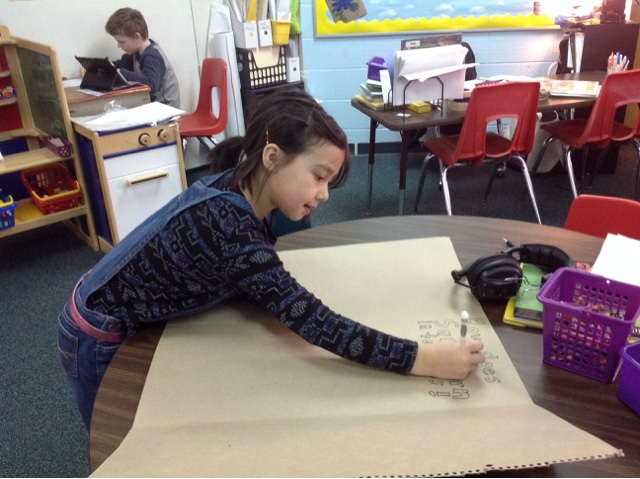In third grade enrichment this year our classroom activities have been fairly well synched to the work students are doing in their regular classroom. Our work has focused on enhancing and adding to the science and social studies curriculum. However for the last four weeks, we left this lock step and students have been spending time in enrichment experiencing the engineering design cycle. Time in the enrichment classroom is often spent making and creating, but for this challenge I wanted students to have a larger purpose. Accordingly to the Engineering is Elementary website (
http://www.eie.org/overview/engineering-design-process) in order to experience an engineering design cycle, students must ask, imagine, plan, create, and improve.
Ask--What is the problem?
We began our engineering design cycle by asking the question: What bugs you? After we clarified that siblings did not count (!) and that students had to think about things in their daily life, or community or world problems that bothered them..the ideas began to flow! Each student began with an Inventor's journal in which they wrote down their 'bugs'. This was an odd experience for us...spending a large chunk of time just documenting negative things.....but we discussed the idea that often great inventions are born from necessity or the desire to improve something. Many students wanted to jump right into creating, but to honor the design cycle we spent one class period simply asking questions. I encourage you to talk to students about what bugged them. The lists were thoughtful and interesting. Some students focused on one particular issue and spent time thinking about the constraints and how others have approached fixing the problem, while others listed many ideas! Since students had just completed a persuasive essay, I encouraged them to try to think of physical things that they could manipulate, design or change. A very few students really struggled to think of any issue that they felt worth working on and so they brainstormed with myself or a partner. (Can you imagine if nothing bugged you? I think that sounds nice, so could not find fault in that feeling if they truly meant it!)
Imagine- What are some solutions? Brainstorm and pick your best idea!
On the second day students read back through their problems. Some added a new problem they had thought of since our last meeting too. Then the creative process began. Some drew pictures, others wrote down ideas, some talked to a classmate or me. Students added an idea or ideas to their Inventor's Journal of how they would solve their problem.
Plan- Draw a diagram and make lists of materials you will need.
Before leaving our class on the second day, students had to create a materials list. They let me know what they might need to build a prototype.
Create- Follow your plan and create a prototype. Test it out.
Last week students began building their prototypes. We had many successes and many failures. We learned that sometimes making something is harder than imagining how to make it!
Improve- What works? What doesn't? What could you do better?
We are finding that improving and creating are happening all together as students iterate on ideas as they complete their prototypes.
By next week our goal is to have a working prototype that students can bring home to share with families. I also challenged students to think of a name for their invention!
As we wrap up, stay tuned for a video of their awesome prototype inventions!
















